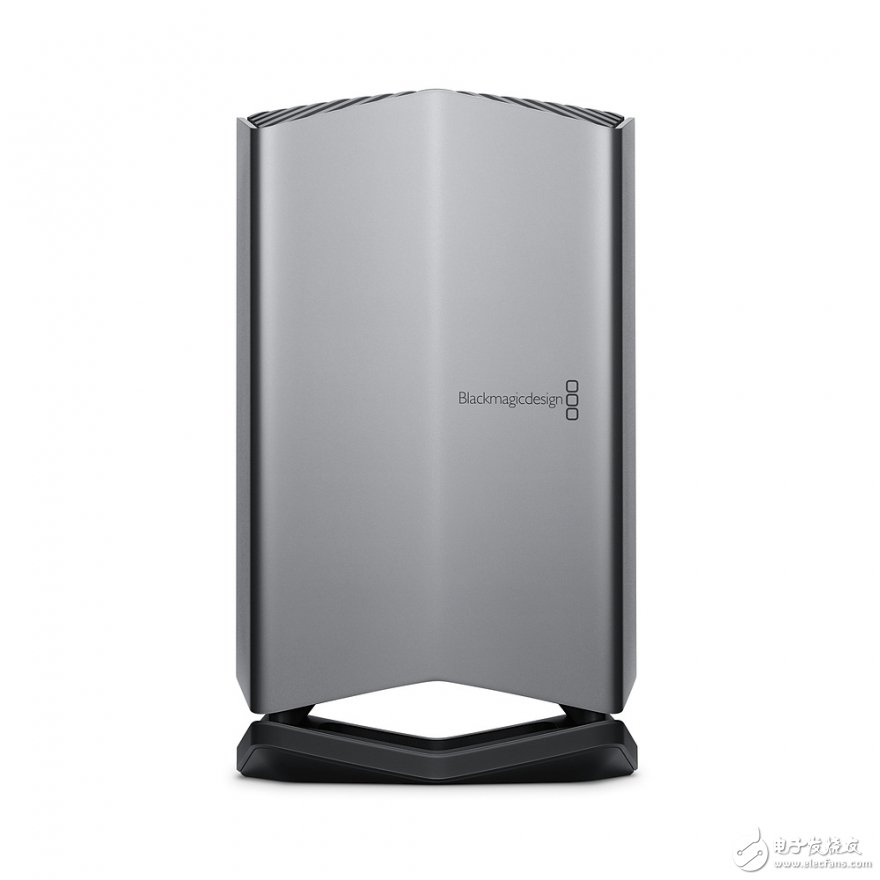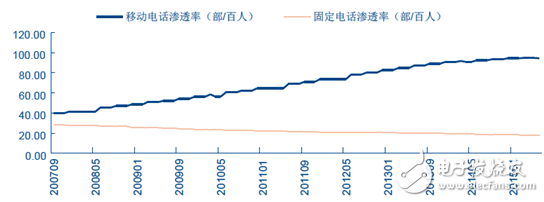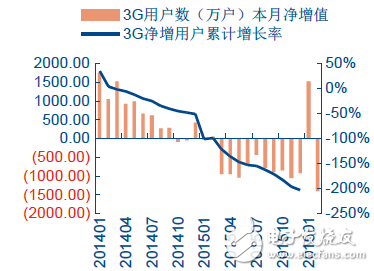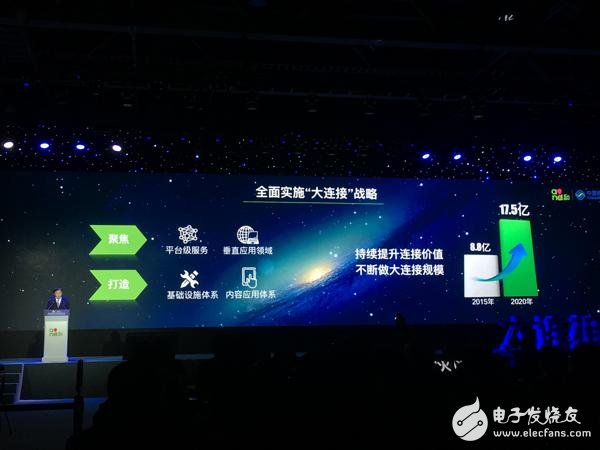Since the Ministry of Industry and Information Technology officially confirmed the 4G network licensing plan in 2014, it is clear that TD-LTE has to build a 4G network standard for domestic operators. The pace of TD-LTE construction of 4G networks and the rapid advancement of commercialization have never stopped. As the leader of the mobile market, China Mobile has occupied the important role of 4G network construction. Mobile 4G users have already occupied 70% of the domestic market. China Unicom and China Telecom are not willing to show weakness. They have deployed their own 1.8Ghz and 2.1Ghz high. Frequency networking, and in the near future implementation of 800Mhz low frequency 4G networking solution. Whether it is 4G networking, base stations, commercial applications, or 4G network users, there will be a spurt of explosive growth in the future 4G. This trend is already on the road and is imperative.
 2016 4G industry development continues to grow, mobile fixed-line market structure adjustment
2016 4G industry development continues to grow, mobile fixed-line market structure adjustment In 2016, the number of fixed-line installed computers showed a decreasing trend, while the mobile user structure showed that the original 2G users penetrated into 3G/4G users, and 4G new users also experienced continuous growth.
As of February 2016, the number of mobile phone users nationwide increased by 3.772 million in the same year, bringing the total to 1.283 billion, down 0.4% year-on-year.

Mobile phone subscriber growth in February 2002-February

Mobile user structure adjustment, 2G to 3G/4G users trend is obvious, fixed-line installation continues to decrease
The mobile user structure is continuously optimized, showing a significant trend of 2G users converting to 3G/4G and 3G users transforming to 4G users. The growth rate of 3G subscribers declined rapidly over the past year and first experienced negative growth in November 2014. In February 2016, the number of 3G users per month decreased by 14.085 million. 4G users continued to explode. In February, 4G users increased by 81.057 million, reaching a total of 50,519,900, accounting for 65% of the total number of 3G and 4G users, accounting for 39.4% of mobile phone users.

Since the beginning of 2014, 3G users have been added, and 3G users have changed to 4G.
China Mobile added 2.728 million subscribers in February, with a total of 831.164 million subscribers, of which 4G subscribers increased by 24.8 million in the month, making it an important contributor to the growth of mobile subscribers. The number of China Unicom users increased by 335,000. China Telecom's net increase in February was 1.62 million, with a total of 20062 million users, of which 2.32 million were added to 3G and 4G subscribers, and the growth was flat, indicating that its 3G/4G business grew well. The three major operators have turned to stock operations.
Due to the first-mover advantage of China Mobile on 4G network, the 4G user market is stronger than China Unicom and China Telecom. The 3G market share of China Unicom and China Telecom has been gradually eroded by mobile, while the national 3G/4G market share has accounted for half of the market. . As of February this year, China Mobile, China Unicom and China Telecom's 4G subscribers accounted for 74.4%, 11.3%, and 14.3%, respectively, and their share of the cumulative 4G subscriber market in the year was 69.3%, 15.3%, and 15.3%, respectively.
China Unicom Telecom launches low-frequency 4G network construction
China Mobile Partner Conference elaborated the "big connection" strategy at the beginning of the year
In the construction of mobile 4G network, China Mobile can be said to be unique. At the China Mobile Global Partner Conference 2016, China Mobile Chairman Shang Bing pointed out that as of the end of November this year, China Mobile's 4G subscribers exceeded 510 million, and 4G base stations completed one month ahead of schedule. Ten thousand sizes. Up to now, China Mobile's 4G subscribers accounted for nearly 70% of the domestic market. From a global perspective, there is one China Mobile subscriber among every three 4G subscribers. China Mobile 4G users currently have more than 1G DOU (user monthly average traffic consumption).
In terms of terminals, the scale of China's mobile social channels is close to 700,000, and it is expected that terminal sales will reach 400 million this year. In terms of VoLTE, by the end of this year, VoLTE will cover 300+ cities, develop 30 million users, and reach 100 million VoLTE/CA terminals.
In order to catch up with China Mobile, China Telecom and China Unicom have added the 2G old 900Mhz frequency band resources in addition to the 2.3Ghz and 2.5Ghz frequency bands, which will be used for the future expansion of the 4G network era.
In December of this year, China Unicom has just been approved by the Ministry of Industry and Information Technology for the use of the national 900M/1.8G/2.1GHz frequency band. It will integrate existing frequency resources and further deploy and deepen the 4G LTE networking.
It is reported that the 900MHz frequency band has the advantages of long coverage distance and strong penetration, and it is beneficial to expand 4G coverage quickly and at low cost, not only to achieve low-cost LTE construction in wide-area scenarios such as rural areas, grasslands, oceans and highways. It can significantly enhance the indoor signal coverage quality of urban buildings, and it also has a strong supporting role for the deployment of mobile Internet of Things in the future.
Also in the first half of this year, China Telecom was also allowed to use the 800MHz and 2100MHz frequency bands for 4G networking.
How do the 4G mobile phone systems of the three domestic operators use the mobile phone to support the 4G network?As we have seen from the above, the low-band networking has the advantages of high coverage and wide coverage, and can widen the 4G network coverage in a very fast layout.
First of all, let's understand the frequency band format of the mobile phone network. The 2/3/4G network of the mobile phone has the same frequency range as the wifi, that is, the frequency band it occupies. Due to the limited frequency resources, in order to facilitate management, the international and “related departments†are different devices, and artificially divided into different frequency ranges (ie, frequency bands). For example, the commonly used Mobile Unicom's GSM mobile phone occupies the 900/1800/1900MHz frequency band, while the telecom CDMA mobile phone occupies the 800MHz frequency band (CDMA1X).
The only rule to remember is that the higher the electromagnetic frequency (MHz value), the shorter the propagation range and the greater the difficulty of signal coverage. This is also an important reason why people always say that telecom's mobile phone signal (800MHz) is always better than mobile Unicom (900MHz).
In the 4G era, the network is not only divided into FDD-LTE and TDD-LTE, and the spectrum of each network is divided into quite a number of frequency bands.
The first column in the table is the artificial frequency band label. The common band 1, band 2, or B1, B2 generation refers to the uplink and downlink frequencies of that line. Band1-28 is the FDD-LTE frequency band. Because FDD uses independent frequency bands for uplink and downlink, the frequency bands of their uplink and downlink are different. Band33-44 is the frequency band of TDD-LTE because it is the uplink and downlink shared frequency band. The same number.
China Mobile Unicom Telecom 4G spectrum division, resource allocation summary
China Mobile, China Unicom 4G spectrum map
According to the 14th Ministry of Industry and Information Technology issued the TD-LTE frequency band as the 4G networking standard, the distribution of China Unicom and mobile telecom bands is probably like this:
China Mobile (130MHz spectrum): 1880-1900MHz, 2320-2370 MHz, 2575-2635 MHz.
China Unicom (40MHz spectrum): 2300-2320 MHz, 2555-2575 MHz.
China Telecom (40MHz spectrum): 2370-2390 MHz, 2635-2655 MHz
Among them, China Unicom and China Telecom will use a hybrid network to build a 4G network, so the low-band part is a TDD network.
The status quo of the 4G LTE operation in the domestic three major operators - the development stageOn December 4, 2013, the Ministry of Industry and Information Technology officially issued TD-LTE licenses to the three major operators;
On December 18, 2013, China Mobile officially launched 4G commercial use in Shenzhen and Guangzhou;
On January 14, 2014, China Mobile announced the first domestic 4G tariff plan;
On February 14, 2014, China Telecom officially launched 4G commercial;
On March 18, 2014, China Unicom officially launched 4G commercial use;
On June 1, 2014, China Mobile lowered its 4G tariffs by 50%;
On June 27, 2014, the Ministry of Industry and Information Technology approved Telecom and China Unicom to conduct TD-LTE/LTE FDD hybrid networking test in 16 cities;
On August 29, 2014, China Unicom and China Telecom announced the expansion of the hybrid network test city to 40;
On February 15, 2015, China Mobile announced that its 4G users exceeded 100 million;
On February 27, 2015, the Ministry of Industry and Information Technology officially issued FDD LTE licenses to China Unicom and China Telecom.
Longhua Manxueling Trading Company , https://www.mxlvape.com
